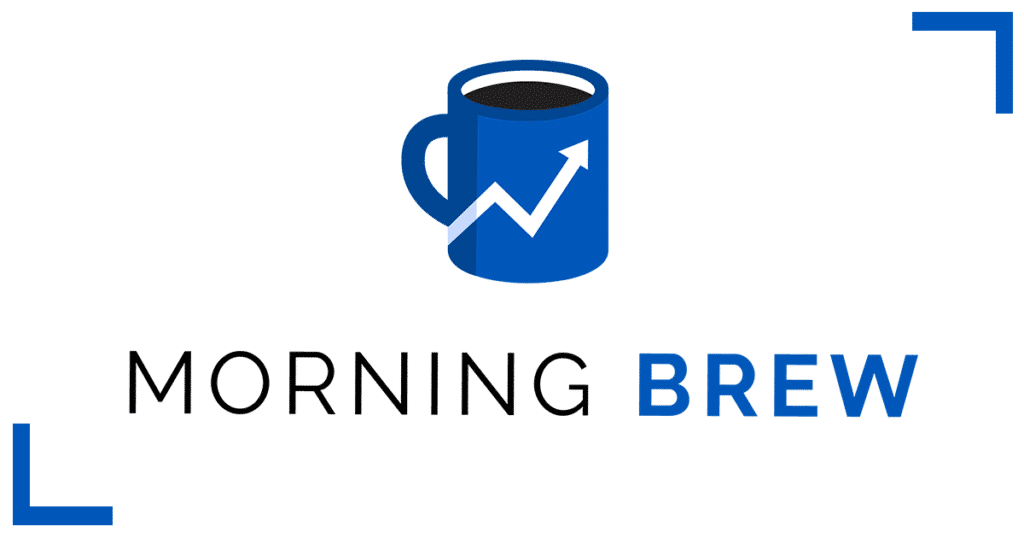
How Morning Brew grew to 2.5M subscribers in 5 years ☕
Here are the early growth tactics used to reach 20M+ revenue in 2021
A thread👇👇

Current outlets like the Wall Street Journal lacked the high level roundup that most young people needed to quickly stay informed and not put them to sleep
At 20 years old, Alex created a PDF newsletter (originally called the Market Corner) and sent it to 45 friends and family. They then got their first 300 subscribers by putting out flyers and speaking at lectures to fellow students at Michigan University
Referrals account for 30% of their total subscribers today. This component was key to accelerating their growth flywheel.
They have a section at the bottom every newsletter called “share the brew”, which takes the readers to the referral program hub.
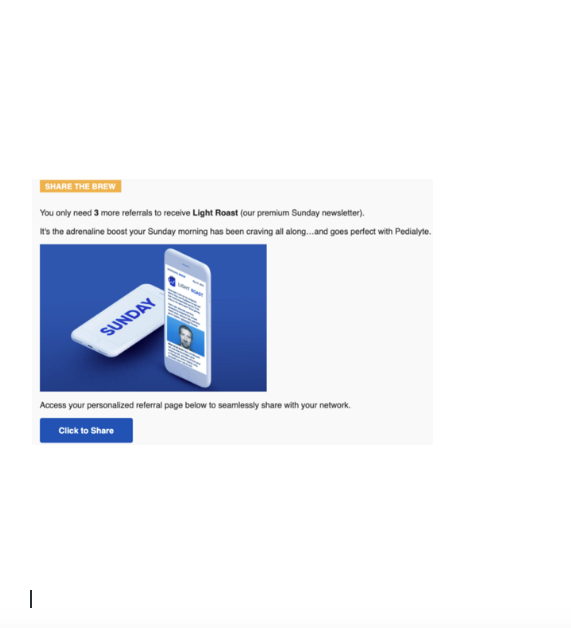
They also made it easy to share right away via link, email, or social media
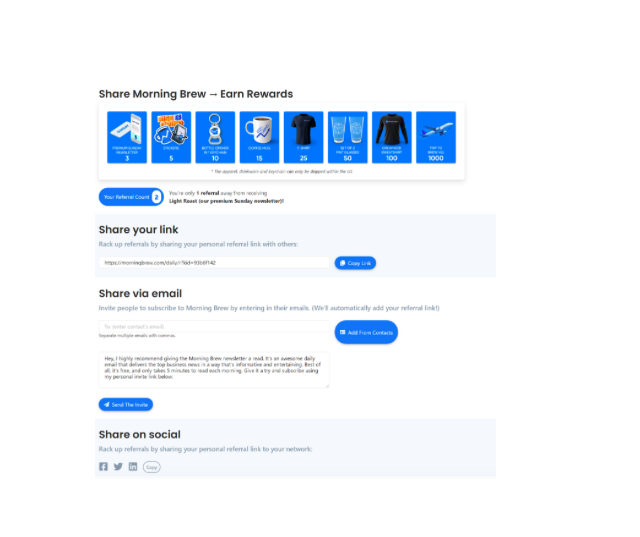
Once they signed up, Morning Brew sent an email reminding them of their reward progress (designed to encourage more referrals, maintaining the viral loop)
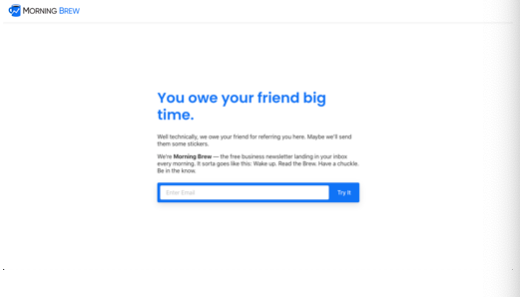
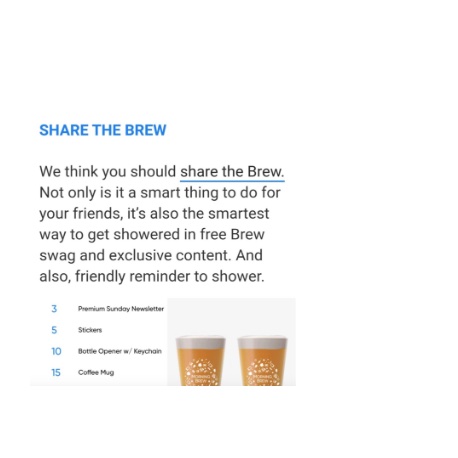
They used enticing email subject lines that got noticed, while showcasing the brand's quirky personality.
Their copywriting was key to their success, leading to a daily open rate of 45% (15% -25% considered “good” in most industries)
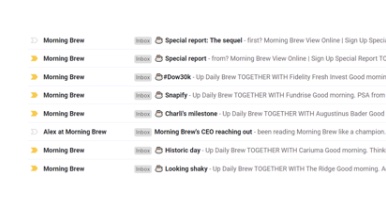
They sent emails to 4 groups of readers with different subject lines (but not all readers, a smaller portion), and whichever one had the highest open rate was used for the remaining (majority) of followers.
Their content was perfectly catered to their younger audience.
They gave quick rundowns of current events, breaking down content into bite sized chunks to not feel overwhelming. Students were tired of too much business jargon. It solved real problems
- $75M valuation
- Acquired by Business Insider
Keys to success:
- Finding a unique niche and solving a problem
- Created content people loved and relied on
- Referral system with clear rewards and tracking
- A/B testing Copywriting
https://t.co/8DMqYhu5ii
And follow me on Twitter for a new thread like this every week!
More from Startups
I shipped all these apps in 2020. Most of them generated $0.
🎬 https://t.co/JAhXqsuu6h $0
🌍 https://t.co/BrNUAhfiIT $0
💡 https://t.co/ZWcLfOH4aI $0
🐞 https://t.co/aghOxYEcPI $1.99
👍 https://t.co/2JhJLe27pW $3,025 in 10 days.
But that's ok, just keep shipping! My stories👇
🎬 https://t.co/wuiBp1XsYD is the first thing I created. It's a community for indie makers. The different thing is we post updates in videos. I created it for fun as I think the world doesn't need one more text-based forum, so I make a video one. No monetization plan so far.
🌍 https://t.co/fiwjgCWho5 is a social app. The idea is from Linktree, an app to share your social links. I thought it would be cool to add more visuals to it, and meanwhile we can explore others around. I also have no monetization plan for it. Make it for fun too.
💡 https://t.co/fZfL45uvVX is a platform to connect influencers with their fans. People says it's like @superpeer. But the only difference is it's all sync. Influencers don't need to commit their time to fixed slot. Fans pay to ask questions, influencers can answer at anytime.
Continuing Influenswer... I think the product has its potential. But for now maybe I didn't find the right niche to serve. Will re-evaluate it in future.
🎬 https://t.co/JAhXqsuu6h $0
🌍 https://t.co/BrNUAhfiIT $0
💡 https://t.co/ZWcLfOH4aI $0
🐞 https://t.co/aghOxYEcPI $1.99
👍 https://t.co/2JhJLe27pW $3,025 in 10 days.
But that's ok, just keep shipping! My stories👇
🎬 https://t.co/wuiBp1XsYD is the first thing I created. It's a community for indie makers. The different thing is we post updates in videos. I created it for fun as I think the world doesn't need one more text-based forum, so I make a video one. No monetization plan so far.
🌍 https://t.co/fiwjgCWho5 is a social app. The idea is from Linktree, an app to share your social links. I thought it would be cool to add more visuals to it, and meanwhile we can explore others around. I also have no monetization plan for it. Make it for fun too.
💡 https://t.co/fZfL45uvVX is a platform to connect influencers with their fans. People says it's like @superpeer. But the only difference is it's all sync. Influencers don't need to commit their time to fixed slot. Fans pay to ask questions, influencers can answer at anytime.
Continuing Influenswer... I think the product has its potential. But for now maybe I didn't find the right niche to serve. Will re-evaluate it in future.
You May Also Like
Following @BAUDEGS I have experienced hateful and propagandist tweets time after time. I have been shocked that an academic community would be so reckless with their publications. So I did some research.
The question is:
Is this an official account for Bahcesehir Uni (Bau)?

Bahcesehir Uni, BAU has an official website https://t.co/ztzX6uj34V which links to their social media, leading to their Twitter account @Bahcesehir
BAU’s official Twitter account

BAU has many departments, which all have separate accounts. Nowhere among them did I find @BAUDEGS
@BAUOrganization @ApplyBAU @adayBAU @BAUAlumniCenter @bahcesehirfbe @baufens @CyprusBau @bauiisbf @bauglobal @bahcesehirebe @BAUintBatumi @BAUiletisim @BAUSaglik @bauebf @TIPBAU
Nowhere among them was @BAUDEGS to find

The question is:
Is this an official account for Bahcesehir Uni (Bau)?

Bahcesehir Uni, BAU has an official website https://t.co/ztzX6uj34V which links to their social media, leading to their Twitter account @Bahcesehir
BAU’s official Twitter account

BAU has many departments, which all have separate accounts. Nowhere among them did I find @BAUDEGS
@BAUOrganization @ApplyBAU @adayBAU @BAUAlumniCenter @bahcesehirfbe @baufens @CyprusBau @bauiisbf @bauglobal @bahcesehirebe @BAUintBatumi @BAUiletisim @BAUSaglik @bauebf @TIPBAU
Nowhere among them was @BAUDEGS to find

















